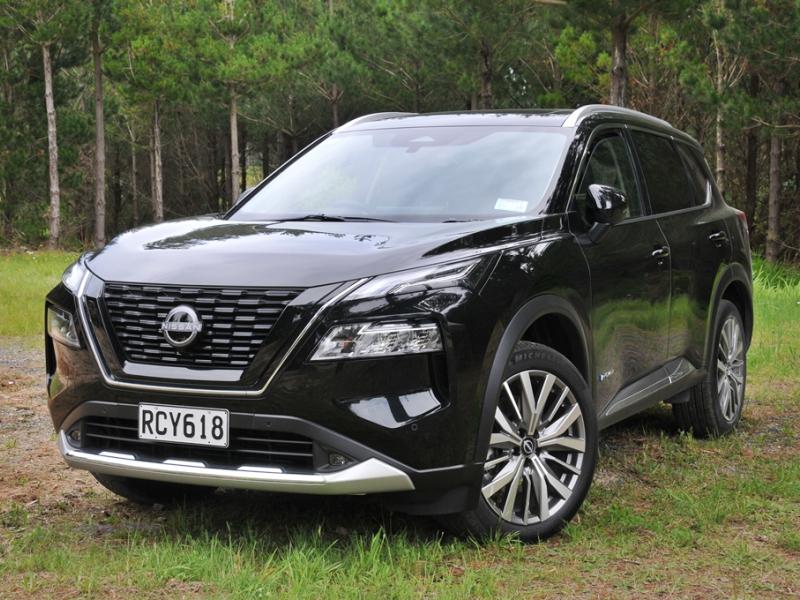On the face of it, Isuzu’s 2017 D-Max/MU-X upgrade is simple, run-of-the-mill, stuff.
In the case of the D-Max the front end sheet metal is new, but unless you parked a new ’un beside a /15 or ’16 model you’d be hard-pressed to tell the difference. Bar, of course, if the engine is running and the new daytime running lights are operating. But you get my drift. At a casual glance, little has changed.
The engine gets a new freer-breathing, Euro 5-compliant cylinder head (and with it a Diesel Particulate Filter system) which provides a useful bonus in peak torque, there are new – now six-speed – transmissions (manual as well as auto), the infotainment system is upgraded (from a seven to eight inch screen and now including GPS as well as a reversing camera) and there is now also a USB outlet for rear seat passengers.
Oh, and some work has been done of sound-proofing the cabin.
But again, you’d have to be a really student of the sector to notice from the outside, or even sitting behind the wheel.
No-nonsense 4WD performer
Which, I wouldn’t be surprised, will suit those already converted to the D-Max way of doing things just fine. I say this because in a relatively short time the D-Max has established a reputation here as a solid, no-nonsense 4WD performer, with a skewer towards rural types pining for ‘a Hilux like they used to be made!’
The superseded model was definitely more old-school in the way it looked and drove compared to the current top-selling D/C 4WD ute, the Ford Ranger. And – to be completely fair – the changes wrought for the 2017 model year are neither as far-reaching, or as immediately noticeable, as those Holden did to the D-Max’s first cousin, the Colorado, last year.
Despite that, once behind the wheel, D-Maxes old and new always seem to be more than a collection of their individual parts, punching well above their weight division, as our test unit did in our 2016 Ute Shootout.
And it’s typical of the steady-as-she-goes, slow-burn nature of the D-Max that it took a while for me to truly appreciate the difference between the old and the new model.
Simply put, it is in its improved driveability, particularly noticeable when you are towing.
Though at 130kWs peak power is unchanged, there has been a significant increase in peak torque (up a full 50Nms).
While it’s always been a willing (if a little rattily on start-up) worker it’s fair to say that you’ve always had to row Isuzu’s signature 3.0 turbo-diesel along to gain the full benefit of its (relatively high) 3600rm power peak.
Now there is absolutely no need, hence the penny dropping as I crested the Bombay Hills in fourth (always a good idea to use the ‘manual’ tiptronic function when towing) ‘gear’ at just over 2000rpm.
At that point I hadn’t checked the specs, but when I did, surprise, surprise, peak torque is now developed between 2000 and 2200rpm!
Subtle? You bet. But worthwhile? Definitely.
Mystery no longer
By happy coincidence I had another mixed use/towing task to complete when it was my turn to test the new D-Max’s similarly upgraded SUV cousin the MU-X.
And a good thing it was too.
Where the combination of engine, new trannie and subtle styling tweaks took some time to reveal their true worth in the D-Max they were immediately obvious in the MU-X.
Where the previous model felt only one step removed from the utilitarian roots of its, er, ute, cousin, the latest model feels like it is in an entirely different post code – or at the very least, like it has moved from a small rural service town to a decent-sized city!
It’s definitely still one of the most robust true seven-seaters on the market and it tows over 2000kg (the braked capacity is 3000kg) absolutely effortlessly.
Very real virtues
Before this latest upgrade however, these very real virtues were hidden in what you could call plain sight. Or a sight plain!
Not any more.
On the outside a combination of sharper (chrome) grille lines, new, angular auto-levelling daytime running headlights with LED Projector lamps, new bonnet, slimmer A pillars, and larger diameter (up to 18” from 17”) alloy wheels finally gives the MU-X some Everest-like eye appeal.
That theme continues inside where the already top-line spec (leather-trimmed with thick and very supportive side bolster) seats, the driver’s electrically adjustable has been enhanced by a new dahs and instrument cluster, new steering wheel and some subtle extra chrome and piano black detailing.
Written down like that this might sound a little chintzy, but the effect is more ‘catching-up-with-Prado’ than ‘trying-to-take-on-Porsche.’
Refinement plus
I can also confirm that the addition of extra sound-proofing has helped in this regard. The Isuzu three-litre turbo-diesel’s signature boisterous clatter on start-up remains, but once up and running refinement levels inside the large, airy cabin are noticeably higher than they were before.
With coils and SUV spring rates at each corner, day-to-day ride on tarmac and gravel is also considerably softer, smoother and less thumpy (read as more ‘car-like’) than that of the more stiffly sprung coil front/leaf rear D-Max utility.
But you’d expect that wouldn’t you? What you mightn’t expect it how little hooking up a 2000+kg trailer/race car combo changes the stance, suspension compliance and ride quality.
Sure you can feel the extra weight under brakes but even in stop/start traffic (I live and do most of my driving in Auckland remember!) it was literally as if the trailer wasn’t there.
So. By freeing up some more torque and refining its look and feel Isuzu has closed the gap there once was between the MU-X and its immediate ‘ruggedised SUV sector’ competitors, Toyota’s Fortuner, Mitsubishi’s Pajero Sport, Holden’s Trailblazer and Ford’s Everest.








